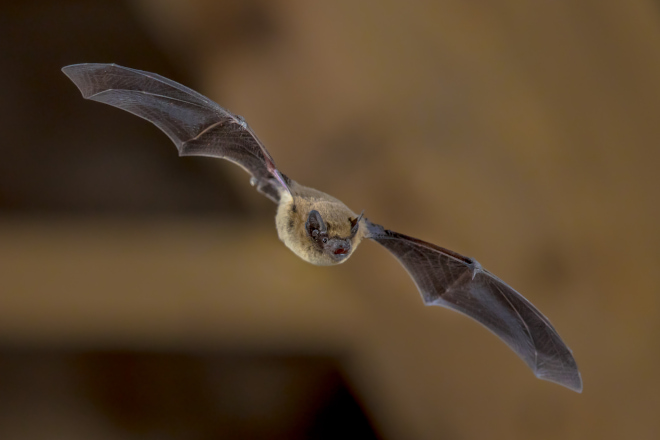Bats are rarely spotted thanks to their nocturnal behaviour, stealthy flight, and dark colouring. They only come out when the night is darkest, and most never touch the ground. Bats have mastered flight, catching their prey in midair and achieving speeds up to 160km per hour. These are fascinating animals that are protected in most parts of the world. In Canada, they cull mosquitoes, protecting us from West Nile Virus and Lyme disease. They eat thousands of bugs per night. So, what do they do in the winter? Contact us for information on humane bat removal and proofing in Ontario.
Bats hibernate in the winter because there isn’t any food for them to eat. There are 18 species of bat in Canada, and all of them are insectivores. They eat bugs like mosquitoes, wasps, and flies. Since there aren’t any of these in the winter, bats roost in caves, mines, barns, abandoned buildings, and other crevices where they can wait out the cold. They roost in large groups of hundreds or even thousands of individuals, huddling together to stay warm. Bats typically hibernate somewhere between October and April. In the spring, they begin to emerge, and by summer, they reproduce.
Signs of a Bat Problem
In some cases, bats will roost in attics and hibernate there for the winter. This is concerning because bats are endangered in Ontario and therefore cannot be removed during hibernation. In the meantime, they will leave droppings on the floor of the attic, which may smell bad and cause mold. If there are bats in your attic, you will have to wait until spring before you can have them removed. Call a professional wildlife removal company for an inspection and removal plan. A licensed technician can evict the animals safely as soon as the animals have woken up.
Bats are very quiet animals, so they often go unnoticed for a long time, even in the summer. If you can, go up into the attic and investigate. Bring a flashlight with you and check the rafters very carefully. Bats like to squeeze into small gaps in the ceiling and huddle together. You may be able to hear some squeaking or chirping noises, and if you get close, a bat may shuffle away from you. Check the floor of the attic for guano. Guano will appear in piles directly underneath the rafters where bats roost. Outside, look for guano on the walls of the home and openings in the sides of the roof or soffits.
Call Bat Control for Removal
Call Bat Control as soon as you suspect that bats are roosting in your attic. These are fascinating, protected animals, but they do not belong indoors. Call us and a technician will find the opening that the animals used to get inside, then attach a one-way door to it to let the animals out. The one-way door will let the animals crawl or fly their way out of the attic but prevent their return. Once out, the bats will find another place to roost. In addition to humane removal, we offer comprehensive wildlife proofing in which we seal off every potential entry point, keeping bats out for good. Call us for bat removal today.
